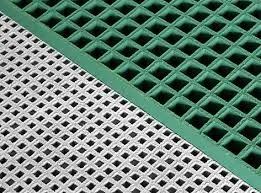
-
 Afrikaans
Afrikaans -
 Albanian
Albanian -
 Amharic
Amharic -
 Arabic
Arabic -
 Armenian
Armenian -
 Azerbaijani
Azerbaijani -
 Basque
Basque -
 Belarusian
Belarusian -
 Bengali
Bengali -
 Bosnian
Bosnian -
 Bulgarian
Bulgarian -
 Catalan
Catalan -
 Cebuano
Cebuano -
 China
China -
 China (Taiwan)
China (Taiwan) -
 Corsican
Corsican -
 Croatian
Croatian -
 Czech
Czech -
 Danish
Danish -
 Dutch
Dutch -
 English
English -
 Esperanto
Esperanto -
 Estonian
Estonian -
 Finnish
Finnish -
 French
French -
 Frisian
Frisian -
 Galician
Galician -
 Georgian
Georgian -
 German
German -
 Greek
Greek -
 Gujarati
Gujarati -
 Haitian Creole
Haitian Creole -
 hausa
hausa -
 hawaiian
hawaiian -
 Hebrew
Hebrew -
 Hindi
Hindi -
 Miao
Miao -
 Hungarian
Hungarian -
 Icelandic
Icelandic -
 igbo
igbo -
 Indonesian
Indonesian -
 irish
irish -
 Italian
Italian -
 Japanese
Japanese -
 Javanese
Javanese -
 Kannada
Kannada -
 kazakh
kazakh -
 Khmer
Khmer -
 Rwandese
Rwandese -
 Korean
Korean -
 Kurdish
Kurdish -
 Kyrgyz
Kyrgyz -
 Lao
Lao -
 Latin
Latin -
 Latvian
Latvian -
 Lithuanian
Lithuanian -
 Luxembourgish
Luxembourgish -
 Macedonian
Macedonian -
 Malgashi
Malgashi -
 Malay
Malay -
 Malayalam
Malayalam -
 Maltese
Maltese -
 Maori
Maori -
 Marathi
Marathi -
 Mongolian
Mongolian -
 Myanmar
Myanmar -
 Nepali
Nepali -
 Norwegian
Norwegian -
 Norwegian
Norwegian -
 Occitan
Occitan -
 Pashto
Pashto -
 Persian
Persian -
 Polish
Polish -
 Portuguese
Portuguese -
 Punjabi
Punjabi -
 Romanian
Romanian -
 Russian
Russian -
 Samoan
Samoan -
 Scottish Gaelic
Scottish Gaelic -
 Serbian
Serbian -
 Sesotho
Sesotho -
 Shona
Shona -
 Sindhi
Sindhi -
 Sinhala
Sinhala -
 Slovak
Slovak -
 Slovenian
Slovenian -
 Somali
Somali -
 Spanish
Spanish -
 Sundanese
Sundanese -
 Swahili
Swahili -
 Swedish
Swedish -
 Tagalog
Tagalog -
 Tajik
Tajik -
 Tamil
Tamil -
 Tatar
Tatar -
 Telugu
Telugu -
 Thai
Thai -
 Turkish
Turkish -
 Turkmen
Turkmen -
 Ukrainian
Ukrainian -
 Urdu
Urdu -
 Uighur
Uighur -
 Uzbek
Uzbek -
 Vietnamese
Vietnamese -
 Welsh
Welsh -
 Bantu
Bantu -
 Yiddish
Yiddish -
 Yoruba
Yoruba -
 Zulu
Zulu
fiberglass damper
The Role of Fiberglass Dampers in Modern Engineering
In the world of engineering, the necessity for effective vibration control and damping systems has reached new heights, particularly in structures exposed to dynamic loads. One of the most innovative solutions that has garnered attention is the use of fiberglass dampers. With their exceptional properties and versatility, fiberglass dampers are becoming an integral part of modern engineering designs.
Understanding Fiberglass Dampers
Fiberglass dampers are devices designed to absorb and dissipate energy generated by vibrations. They are often used in buildings, bridges, and various infrastructure projects to minimize the effects of dynamic forces, such as earthquakes, wind-induced motions, and other mechanical disturbances. Made from a composite material that combines glass fibers with resin, these dampers offer a unique set of advantages over traditional damping systems.
Key Advantages of Fiberglass Dampers
1. Lightweight yet Strong One of the most significant benefits of fiberglass is its high strength-to-weight ratio. This feature makes fiberglass dampers ideal for applications where heavy materials could strain the structural integrity of the system. The reduced weight allows for easier installation and lower material costs during construction.
2. Corrosion Resistance Unlike metal dampers, fiberglass does not corrode when exposed to environmental elements. This characteristic is particularly beneficial in coastal regions or areas with high humidity, where traditional materials may weaken over time. The durability of fiberglass ensures a longer lifespan for the dampers, reducing maintenance costs and the need for frequent replacements.
3. Energy Absorption Capacity Fiberglass dampers exhibit excellent energy absorption capabilities. When subjected to dynamic loads, these dampers can efficiently dissipate energy, minimizing the transfer of vibrations to the rest of the structure. This harmony in energy management is critical in safeguarding buildings and infrastructure against potential damage during seismic events or high winds.
4. Versatility in Design Fiberglass dampers can be engineered into various shapes and sizes to fit specific applications and aesthetic requirements. Their adaptability makes them suitable for not only functional applications but also for integrating into architectural designs without compromising visual appeal.
fiberglass damper

5. Cost-Effectiveness While the initial investment in fiberglass damping systems may seem higher than traditional options, the long-term savings associated with reduced maintenance and increased durability often make them the more economical choice. This financial aspect is further bolstered by the increasing availability of fiberglass materials, which has lowered production costs.
Applications of Fiberglass Dampers
The versatility of fiberglass dampers lends itself to a wide range of applications. In civil engineering, they are commonly employed in high-rise buildings, bridges, and other critical structures to enhance seismic safety and wind resistance. Additionally, they are used in automotive and aerospace industries to reduce vibrations and improve overall performance.
One notable example of fiberglass dampers in action is their implementation in skyscrapers in seismic-prone areas. By strategically placing these dampers within the building's structure, engineers can effectively mitigate the swaying motion caused by earthquakes, ensuring the safety and comfort of the occupants. Similarly, bridges equipped with fiberglass dampers can withstand the stresses induced by heavy traffic and wind forces, significantly extending their lifespan.
Looking to the Future
As technology continues to advance, the potential applications for fiberglass dampers are likely to expand. Ongoing research in the field of composite materials may lead to even more efficient and effective damping solutions, aligning with the global push for sustainable engineering practices. The lightweight and durable nature of fiberglass certainly positions it well within the growing trend toward eco-friendly construction materials.
Conclusion
In summary, fiberglass dampers present a robust and innovative solution for managing vibrations in modern engineering. Their lightweight nature, corrosion resistance, energy absorption capacity, and versatility make them an attractive option for a multitude of applications. As the construction and engineering industries continue to evolve, the role of fiberglass dampers will undoubtedly expand, leading to safer, more resilient structures capable of withstanding the challenges posed by dynamic forces. Embracing such advancements is vital for the future of engineering and infrastructure development.









